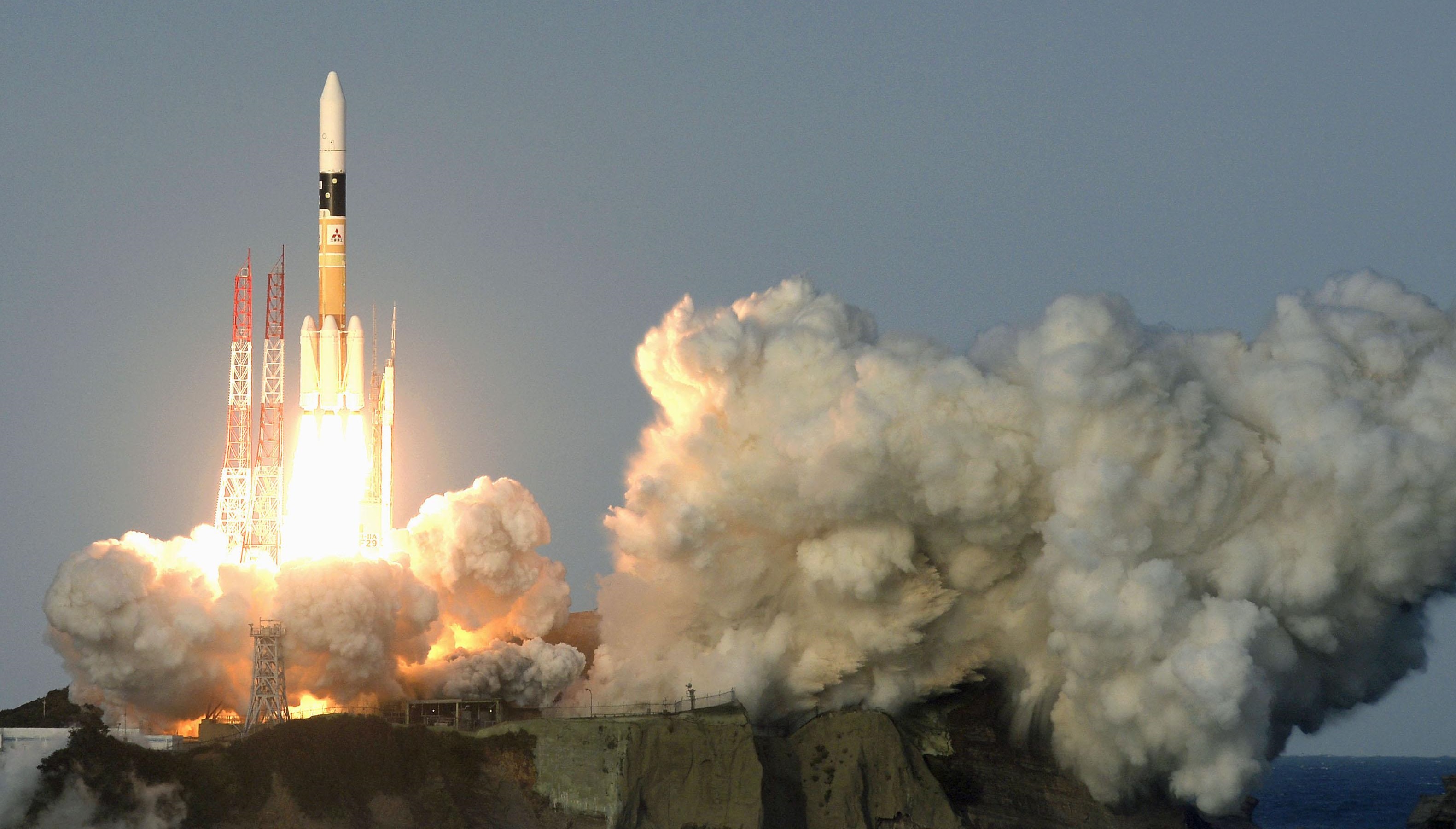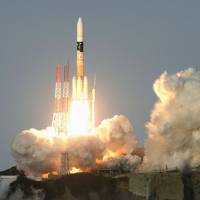An H-IIA rocket carrying a Canadian communications satellite lifted off Tuesday, marking the first time a commercial satellite has been launched into space by the Japanese-built platform.
The rocket, launched at 3:50 p.m. from the Tanegashima Space Center in Kagoshima Prefecture, has an improved second-stage engine aimed at carrying satellites farther in distance and closer to the Earth's geostationary orbit during its 4½-hour flight.
The payload was Telesat Holdings Inc.'s broadcast and communications satellite, named Telstar 12 Vantage, which is expected to provide coverage to Europe, Africa and South America.
Improvements made to the rocket mean a satellite carried on the vehicle will need to travel a shorter distance on its own to reach its intended orbit and thus allow it to operate longer while above Earth.
The Japan Aerospace Exploration Agency spent ¥9.2 billion on the modification. Mitsubishi Heavy Industries Ltd., which builds and operates H-IIA rockets, hopes the improvement will help it land more satellite launch orders.
H-IIA rockets had carried only government satellites to space since their first launch in 2001.
Price competition is becoming fierce in the launch market worldwide. The price tag for the latest launch came to around ¥12 billion, still much higher than the cost of a similar launch using California-based Space Exploration Technologies Corp.'s Falcon 9 rocket, which costs ¥8 billion or less.




